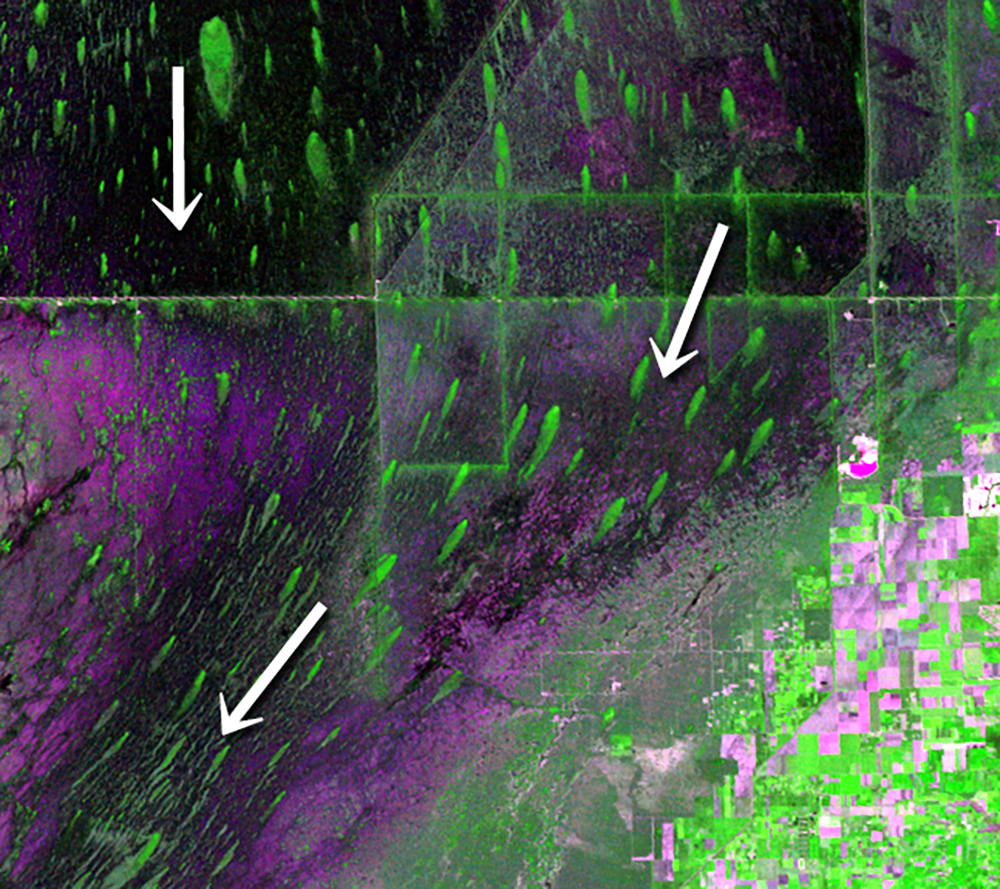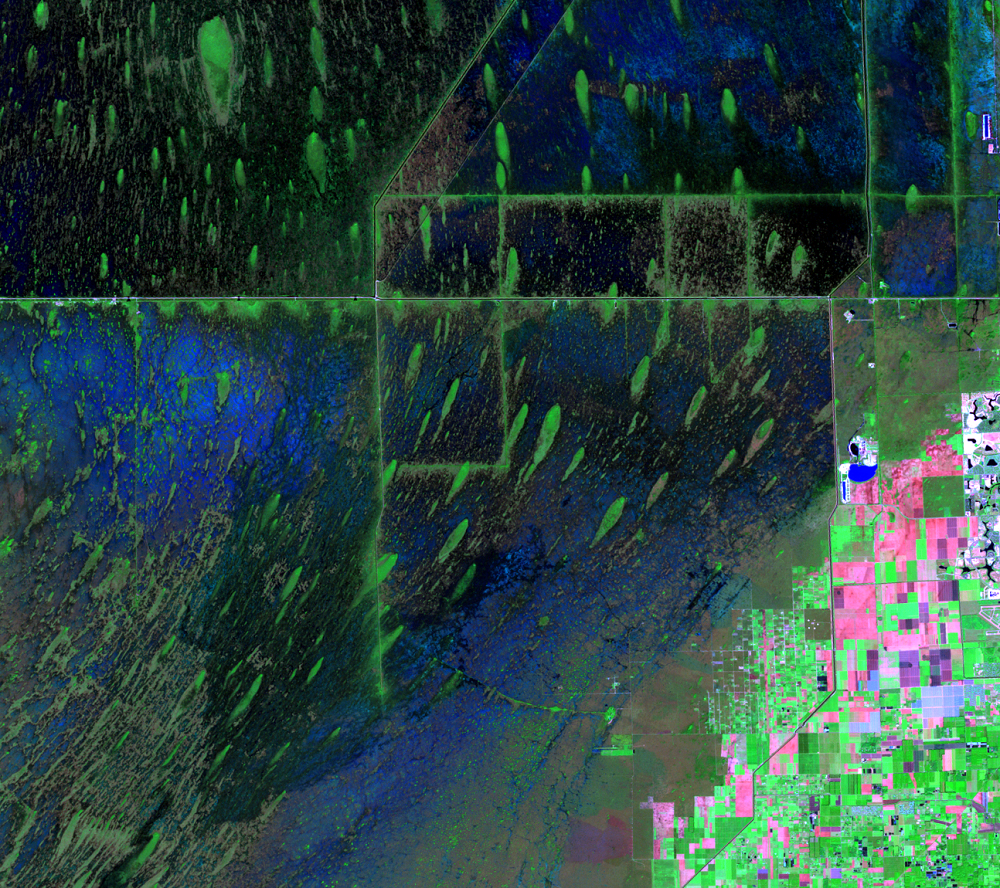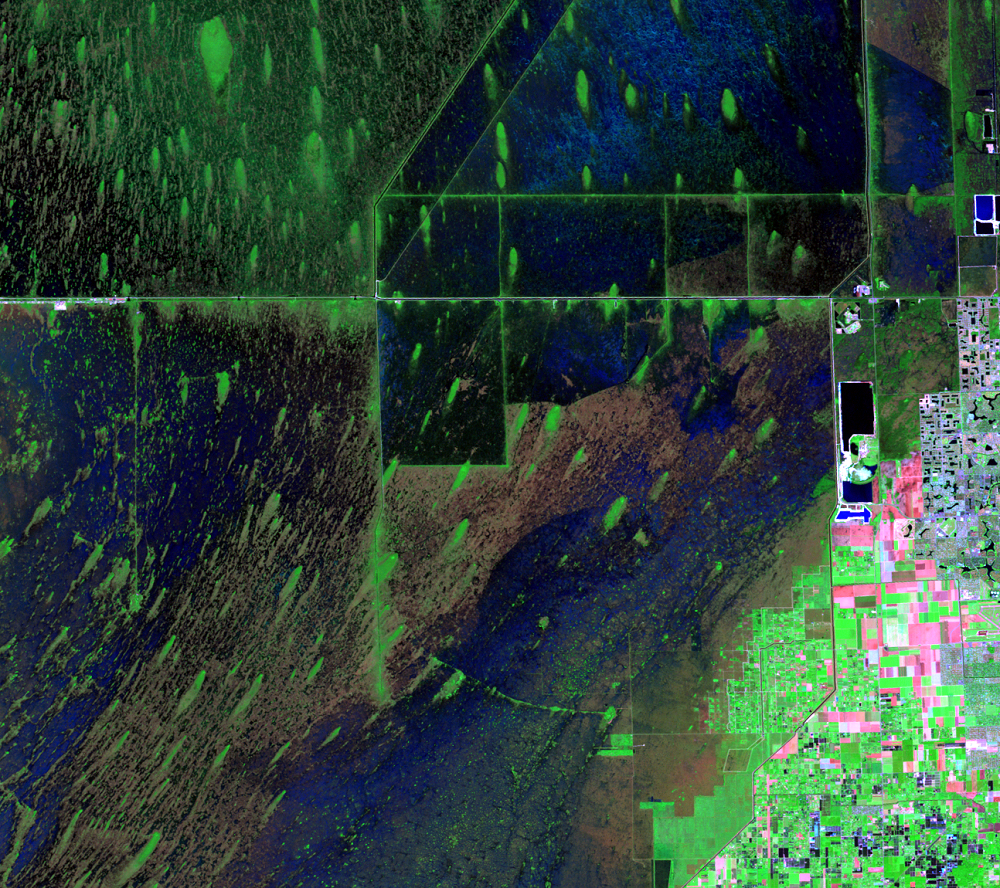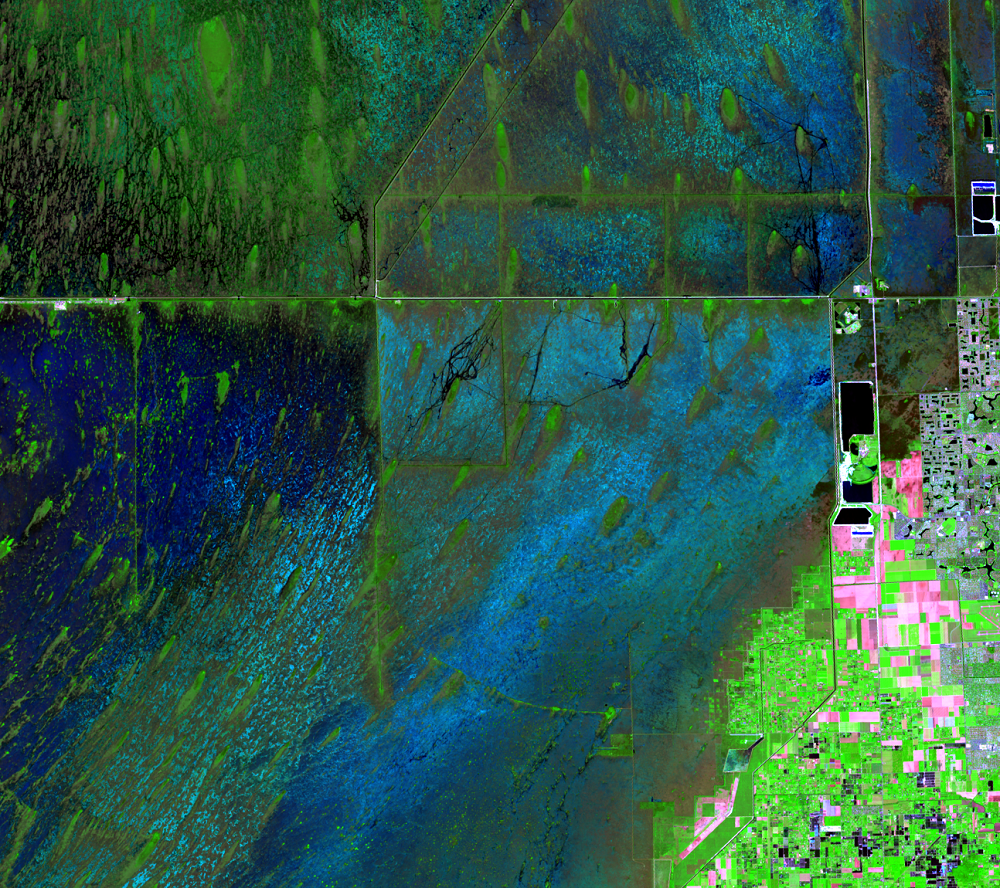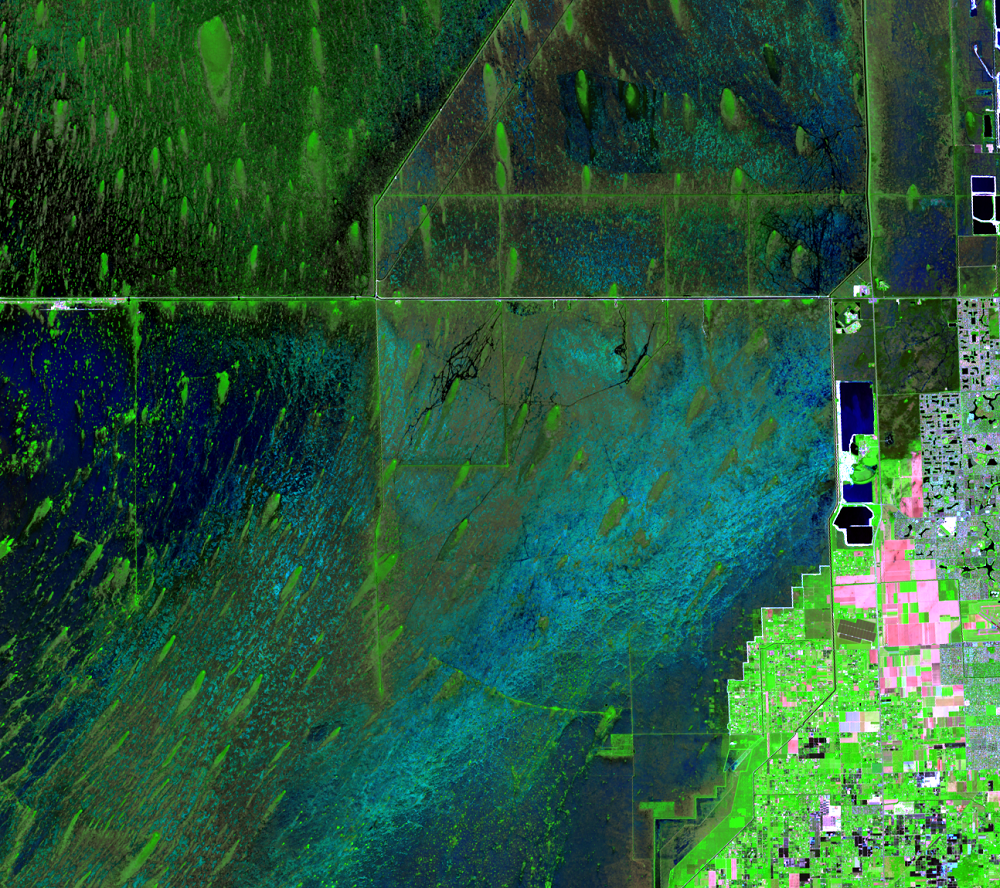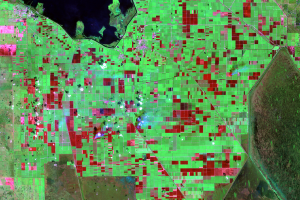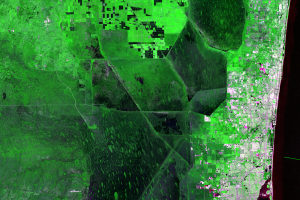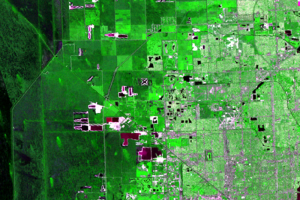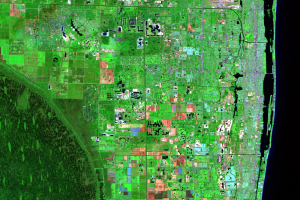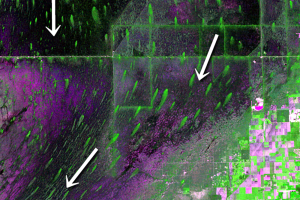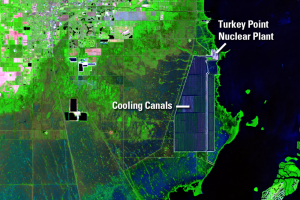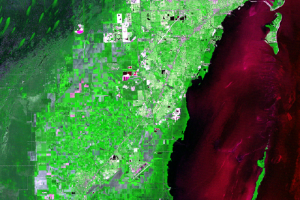A unique feature of the Everglades is the dark green teardrop-shaped forms scattered throughout the region. Referred to as hummocks, or “tree islands,” these biodiversity hotspots provide food, cover, and critical nesting sites for numerous species.
The patches of woody vegetation range in size from 0.01 to 70 hectares, and they stand out from the sawgrass and marsh landscape 0.6–1.2 meters (2–4 feet) above the slough bottom. The teardrop shape generally points in the direction of the flow of water.
Tree islands can have as much as 10 times the nutrient phosphorus as the surrounding Everglades. They soak up both phosphorus and nitrogen, allowing these spots to flourish and provide habitats for plants, invertebrates, amphibians, reptiles, mammals, and resident and migratory birds, increasing overall biodiversity. As these islands store up phosphorus, they keep phosphorus low in the surrounding marsh. When the phosphorus concentrations in the rest of the marsh goes up, cattail invades, which affects fish and wading bird populations.
The number and areal extent of tree islands have been reduced over the past 75 years with the changes in hydrology caused by the levees and canals.


